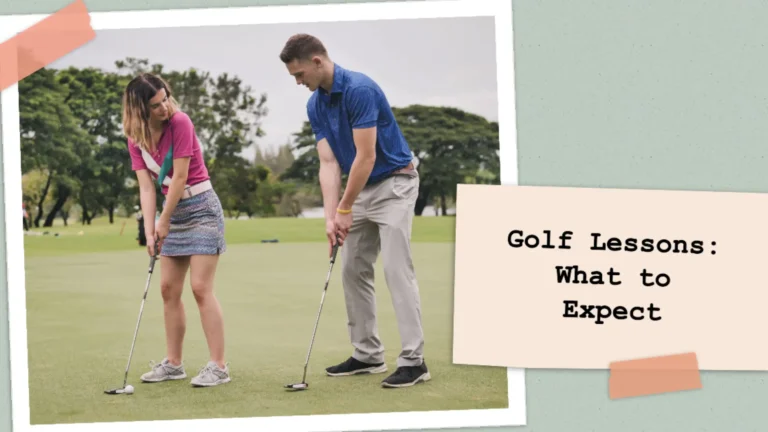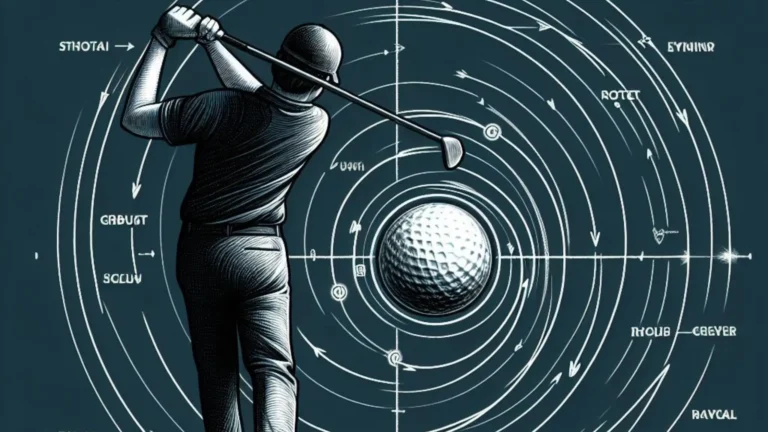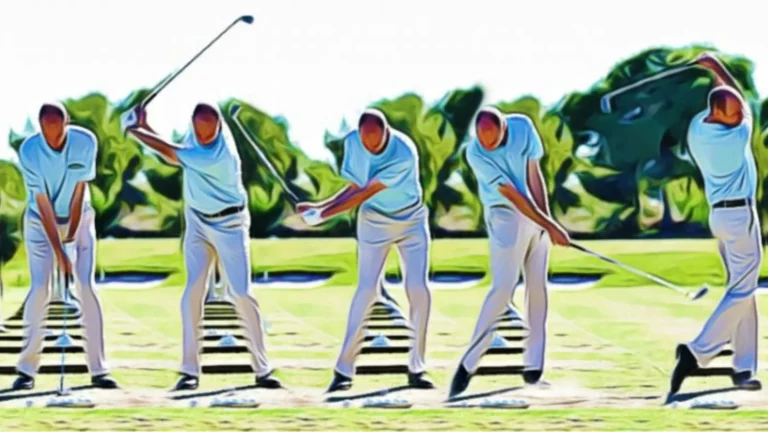Improve Your Golf Performance with Effective Shoulder Flexibility and Strength
Golf is a physically demanding sport that puts significant strain on the shoulders. The powerful, repetitive golf swing takes extreme shoulder flexibility, mobility, and stability. Maintaining a healthy shoulder is important for consistent golf performance and injury prevention. Golfers can improve shoulder function by incorporating targeted shoulder stretches and exercises into their flexibility routines, increasing distance and accuracy off the tee and giving them confidence with every club in their bag.
The Rotator Cuff Muscles
The rotator cuff consists of four muscles in the shoulders that surround the shoulder joint, providing strength and stability. These muscles are the supraspinatus, infraspinatus, teres minor, and subscapularis. Maintaining rotator cuff flexibility allows for a more complete shoulder turn during the golf swing, allowing the arms to elevate properly without pain or tightness. When the rotator cuff muscles become strained or imbalanced, it can cause discomfort and compromise golf mechanics. Stretching to lengthen the rotator cuff while increasing muscular endurance is the foundation for healthy shoulder mobility.
The Cross Body Shoulder Stretch targets the posterior rotator cuff muscles that externally rotate the shoulder, such as the infraspinatus and teres minor. Golfers perform this stretch by reaching one arm horizontally across the chest and using the opposite arm to gently pull the extended elbow towards the body. Hold for 15-30 seconds, then repeat on both sides to improve bilateral shoulder mobility.
The sleeper stretch isolates the anterior rotator cuff muscle known as the subscapularis. Begin by lying on your side with the shoulder at a 90-degree angle. Clasp your hands together and straighten the top arm, gently pressing it downward until you feel a stretch along the front/inner shoulder. To avoid overstretching, perform in small doses lasting up to 30 seconds. Targeting the tight subscapularis improves the internal shoulder rotation necessary for the golf backswing.
Posterior Capsule Tightness
Many golfers experience limited external shoulder rotation due to posterior capsule tightness. The shoulder capsule is a connective tissue envelope that surrounds the entire joint and is lined with synovial membranes that supply nutrients to shoulder structures while also allowing for smooth movement. Restrictions in this tissue can prevent a complete shoulder turn away from the ball during the backswing. Tightness here is also associated with shoulder impingement and pain over time.
The sleeper stretch mentioned earlier also helps to stretch the posterior capsule. Prone Horizontal Arm Raises are an additional exercise that applies sustained pressure to the posterior shoulder to improve joint mobility. Begin lying face down, arms extended overhead and thumbs pointing up. Begin the movement by externally rotating the shoulder blades to a “thumbs-up” position while lifting the arms just off the ground. Only raise to a comfortable height, feeling a stretch in your shoulders without straining. Perform 2-3 sets of 10-15 reps as part of your post-round flexibility routine.
Thoracic Spine Mobility
When it comes to golfers’ shoulder flexibility, they should not overlook the upper back region known as the thoracic spine. This area must extend and rotate to allow for a full shoulder turn during impact. Restrictions here can prevent proper shoulder mechanics during the swing. Several key muscles that connect the thoracic spine and shoulder blades also help to keep the shoulders dynamically stable. If these muscles become stiff or imbalanced, complications cascade downwards, resulting in poor shoulder function.
A corner stretch uses a wall or door frame’s corner edge to open the thoracic spine and shoulder blades. Face the corner and place the inside forearm against the wall, elbow bent at 90 degrees. Step in towards the corner until you feel a gentle stretch in your chest and front of shoulder. Engaging the deep core muscles prevents excessive arching of the lower back. Perform 30-60 seconds on each side. Regularly mobilizing the thoracic spine and shoulder blades improves shoulder mobility.
Serratus Anterior Stretching
The serratus anterior muscles run along the sides of the ribcage and connect the shoulder blades to the torso, causing scapular rotation and protraction during overhead movements such as the golf swing. Tight or weakened serratus anterior muscles alter normal shoulder blade function, resulting in mechanical compensations during the downswing and follow-through. This imbalance can harm the shoulders over time.
The Seated Scapular Squeeze and Door Frame Stretch are both serratus stretches. The Door Frame Stretch requires golfers to stand in a doorway with their elbows bent at 90 degrees and their forearms pressing against the door frame. Shift your body weight forward through the shoulders until you feel tension along the rib cage and shoulder blades, but avoid arching your low back. Hold for 30 seconds.
The Seated Scapular Squeeze works the lower serratus anterior muscles. Sit upright with your arms straight out to the sides at shoulder height, palms down. Try to bring the shoulder blades together while keeping the arms elevated and static. Instead of hunching your shoulders, focus on feeling the deep muscles along the rib cage contract towards the spine. Perform 10-15 repetitions to increase muscular endurance and stability.
Consistent flexibility training for the entire shoulder complex prepares the body for fluid golf mechanics and prevents common golf injuries. Because fundamental swing positions such as the backswing, downswing, and follow through place significant demands on the shoulders, maintaining strength and mobility here gives golfers the best chance of peak performance. Whether you use these techniques at home, on the driving range, or with a fitness professional, investing a little time in shoulder health pays off.
Conclusion
The unique physical demands of golf place a significant strain on the shoulders. Golfers who develop well-conditioned rotator cuff, thoracic spine, and scapular stabilizing muscles can increase shot distance and accuracy while remaining pain-free. This necessitates a dedicated self-care regimen involving targeted stretches and exercises. Golfers who take proactive measures to improve shoulder flexibility and strength give themselves the physical capability to excel on the course. Even incorporating a few of these techniques into a regular routine can help you play better golf by maintaining healthy shoulders.







